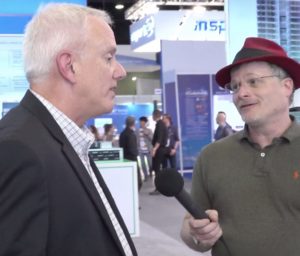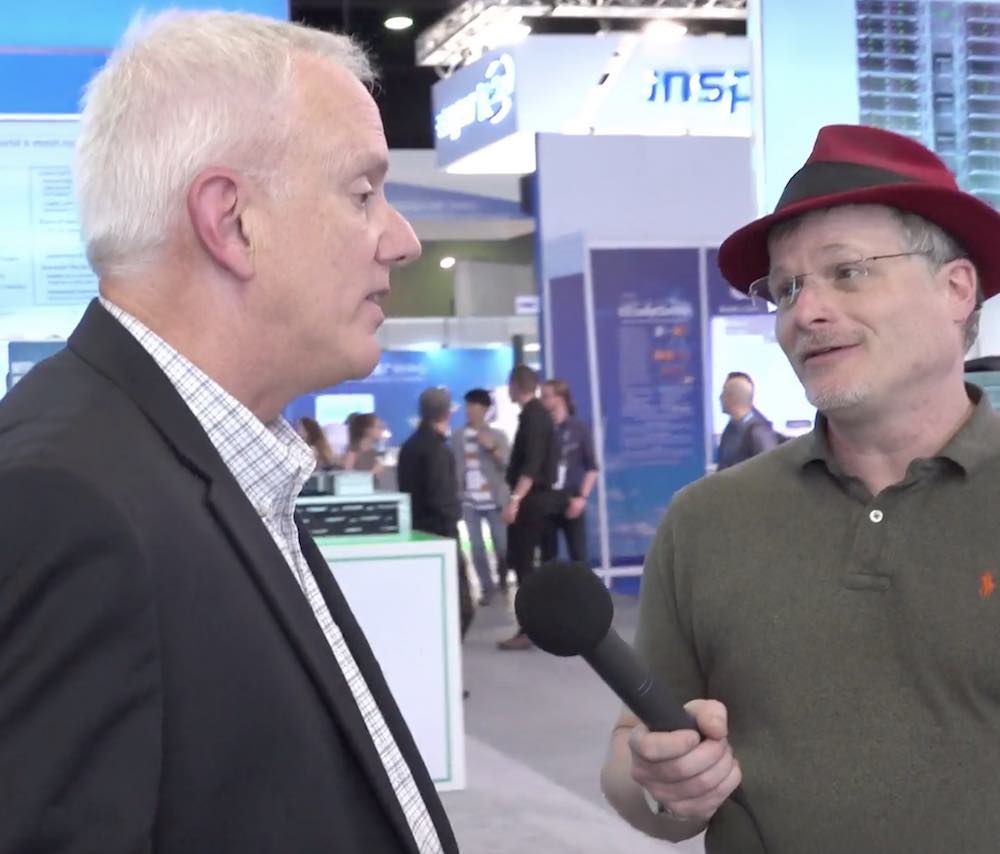
Mike Vildibill (left) is the VP of the Advanced Technologies Group at HPE
In this video from ISC 2017, Mike Vildibill describes how Hewlett Packard Enterprise describes why we need Exascale and how the company is pushing forward with Memory-Driven Computing.
To deliver exascale performance in 2022-23, high-performance computing machines will need to be 10 times faster and more energy efficient than today’s fastest supercomputers. This will require active research into technologies that will dramatically improve compute processing power while at the same time reduce energy consumption and space requirement by an order of magnitude. HPE’s reference design will address this set of challenges, as well as the memory, fabric capacity and bandwidth constraints of today’s HPC architecture, to deliver exascale computing performance with low latency.
At the heart of HPE’s exascale reference design is Memory-Driven Computing, an architecture that puts memory, not processing, at the center of the computing platform to realize a new level of performance and efficiency gains. HPE’s Memory-Driven Computing architecture is a scalable portfolio of technologies that Hewlett Packard Labs developed via The Machine research project. On May 16, 2017, HPE unveiled the latest prototype from this project, the world’s largest single memory computer.”
As you may recall, HPE recently won a PathForward award from the DOE to develop memory driven computing for Exascale.
We are excited at the opportunity to provide the technical blueprint for an exascale system that will process data faster than any supercomputer available today and enable a new era of computational and scientific capabilities,” said Bill Mannel, vice president and general manager, HPC Segment Solutions, HPE. “Our novel Memory-Driven Computing architecture combined with our deep expertise in HPC and robust partner ecosystem uniquely positions HPE to develop the first U.S. exascale supercomputer and deliver against the PathForward program’s goals.”




